Spectrum Fluorescent Tubes


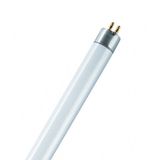
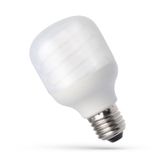




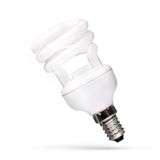
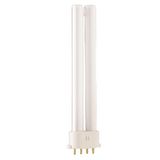



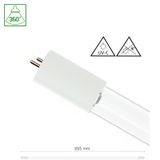

spectrum fluorescent tubes in real schedules
Teams keep these on drawings where long, uniform ribbons of light, proven gear, and easy spares matter more than a fast LED swap. Think 600/1200/1500 mm runs, G13 and G5 caps, stable output behind parabolic or micro-prismatic optics, and clean pairing with emergency inverters built for fluorescent ballasts. Choose by ballast type and ambient around the luminaire body—maintained lux and flicker ride on those two decisions, not just nominal wattage.
spectrum t8 fluorescent lamps lengths, caps, output classes
T8 (Ø26 mm, G13) remains the workhorse for retrofits and legacy grids. Common nodes: 18 W, 36 W, 58 W; expect roughly 1.3–1.5 klm, 3.2–3.6 klm, and 5.0–5.4 klm on HF gear. Standard CCT packs 3000 K, 4000 K, 6500 K with CRI 80 as the baseline; selected lines carry CRI 90 for materials review. Best flux arrives near 25 °C tube wall temperature. In closed channels, keep a little airflow; otherwise you’ll see droop that inspectors notice with a lux meter.
spectrum t5 tubes efficiency nodes and thermal behaviour
T5 (Ø16 mm, G5) splits into HE (14/21/28/35 W) for offices and HO (24/39/54/80 W) when ceiling heights push >3 m. T5 peaks closer to 35 °C, so warm plenums help rather than hurt. On electronic ballasts you’ll see PF ≥ 0.95 and low ripple, which keeps camera flicker issues away in meeting rooms and labs. Slimmer glass also tightens the cut-off line in suspended runs—useful where glare control must hit UGR ≤ 19.
spectrum fluorescent tube fixtures optics, gear, mounting
Bodies range from louvred trays to micro-prismatic panels and sealed channels. HF ballasts (EN 61347-2-3 / EN 60929) are the default for dimming and for presence/daylight loops; magnetic gear only makes sense where access is easy and budgets are rigid. Emergency: pick fixtures with space for 1–3 h inverters and battery packs and check cold-start test records. Before ceiling cuts, confirm tray depth against cable bend radius and any controls gear—too many programmes forget the space an EM kit actually needs.
Technical specifications that drive design
- Electrical: 220–240 V, 50/60 Hz via HF gear; legacy choke+starter per IEC 60155 where still in service.
- Luminaires: EN/IEC 60598-1; EMC per EN 55015 / EN 61547.
- Lifetime windows: ~12–20k h on magnetic; ~20–36k h on HF with programmed start. Lumen maintenance typically ≥85% mid-life when thermals are correct.
- Colour: 3000/4000/6500 K; lock CRI to the task (80 for circulation/back-of-house; 90 where colour judgement matters).
- Controls: DALI or 1–10 V only with electronic ballasts; check minimum-dim flux to avoid visible stepping in quiet spaces.
This sits under the broader umbrella of spectrum linear fluorescent lighting, which is still specified for continuous rows and predictable photometry.
Applications and compatibility across building types
Open offices and classrooms use continuous rows for uniform desk illumination; warehouses lean on HO T5 to keep vertical lux on racking without chasing narrow beams. Healthcare corridors want neutral white at modest luminance to avoid glossy wall glare. Retail back-of-house stays with familiar gear to simplify spares. Where a brief calls up spectrum office lighting tubes, put the ballast type onto the drawings—mixing magnetic and HF on one circuit produces inconsistent start behaviour that looks like “random faults” during commissioning.
Integration with controls and emergency systems
Presence and daylight work best with programmed-start ballasts; they tolerate cycling without chewing through cathodes. For dimming, verify low-end stability if cameras are present. Emergency changeover prefers fixtures with documented compatibility lists and clear wiring space for test switches. If the schedule mentions spectrum energy saving fluorescent lamps, pair HF ballasts, the right CCT/CRI, and optics with a higher utilisation factor—the watt-cuts alone won’t hit the lux plan.
Selection criteria for B2B buyers
- Photometry first: target horizontal/vertical lux and UGR, then pick lamp type and optic.
- Ambient and plenum: T8 likes ~25 °C, T5 likes ~35 °C—match to the ceiling environment.
- Gear choice: HF for dimming and sensors; magnetic only where simplicity and easy access beat everything else.
- Colour policy: 3000 K hospitality, 4000 K offices/healthcare, 6500 K inspection; specify CRI per zone.
- Maintenance: standardise lengths, caps, and ballast families floor-by-floor to keep van stock lean.
- Documentation: lock starter type for any magnetic circuits and record emergency inverter part numbers on the schedule.
Procurement notes and range pairing
Keep two fixture depths across the job to avoid random cut-outs. Order spares—lenses/gaskets—at 2–3% overage; they’re the first casualties during late-stage works. Where the tender lists spectrum fluorescent tube fixtures, request photometry (LDT/IES), thermal notes, and EM kit space claims with the quote so ceiling coordination doesn’t stall.
Why Bankoflamps is practical on Spectrum packages
Pricing tracks your room schedules, not just SKU lists. Your account manager aligns lamp nodes, ballasts, optics, emergency options, and accessories to each grid and corridor. The portal shows live EU stock per warehouse; quotations land in about an hour with EAN/MPN, lumen tables versus temperature, ballast compatibility, and EM notes. Orders go in by manufacturer code; downloadable price lists carry validity windows that hold through phases. We track lead times and shipment legs, consolidate by site and zone to cut off-loading, and provide purchase-history analytics. Approved accounts can run with post-payment up to 30 days across France, the Baltics, Germany, Spain, Italy, Belgium, and the Netherlands.